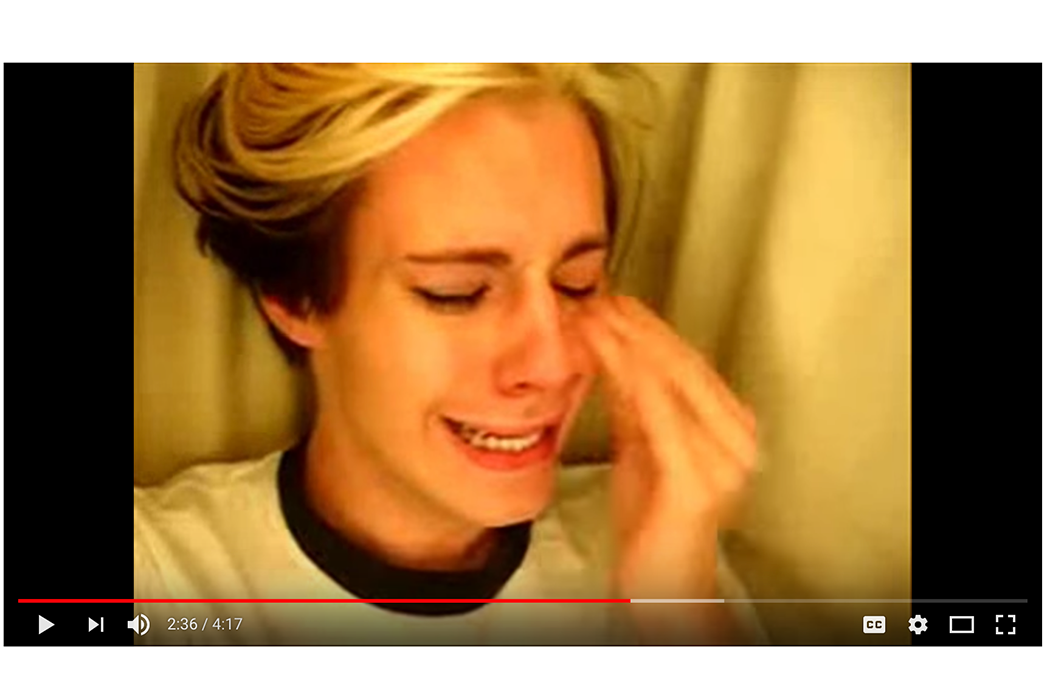Celebrities used to be larger than life. Stars like Audrey Hepburn, Humphrey Bogart, and Grace Kelly were beloved because they were made to seem perfect and inaccessible; royalty by profession (and, in Kelly’s case, eventually actual royalty.) But today it seems we love finding that movie stars are actually just like us—they cheat on their diets, have difficult marriages, drink too much, and look significantly more ordinary without makeup on.
Perhaps our love of the ordinary explains why we’ve allowed the internet to create a new category of celebrity. Writes Joshua Gamson in PMLA, “the Web has also generated a sort of bottom-up, do-it-yourself celebrity production process that is partly autonomous from its predecessors, since the ‘digital tools of self-publicity are increasingly available to ordinary people’.” He goes further:
In the established Hollywood-based celebrity system, one has to navigate the tight gate keeping structure, already tipped toward the young, beautiful, or talented; find, create, or wait for a break; get an agent, a job, a recording contract, and perhaps a publicist. The Internet drastically widens the pool of potential celebrities by lowering the entry barriers—a computer and a bit of moxie, and you’ve got a shot—and bypassing the tightly controlled publicity system and the tightly controlling middle people of Hollywood.
It is difficult to remember that once “self-promotion” was considered a pejorative phrase. And consider this: the front-facing cameras that make our beloved selfies so easy weren’t really in mass production until around 2003. The norms for an acceptable amount of self-exposure have changed drastically.
What people are looking for in their celebrities is also different. Reality television commercialized the exhibition of our most private, irrational, and unpolished selves, both personally and physically. YouTube stars willing to invite people into their living rooms, bedrooms, and inner thoughts are able to convert their candor into fame.
Even accidental fame can be potent. “Double rainbow,” “Charlie bit my finger,” “Listen Linda Honey,” and “Leave Britney alone” have all become common refrains, although their original appeal was rooted chiefly in their sincerity and ordinariness.
Still, we shouldn’t be too quick to assume that the internet has made our bedrooms the same as movie sets, and the careful arrangement of our webcams to catch just the right light the same as directing. Internet fame may grant recognition, but it will not likely be from the Academy. YouTube celebrities, for all their glamour and, sometimes, wealth, are still a far cry from the George Clooneys and Meryl Streeps of the world.
“The emergence of a vast layer of semiknown people whose celebrity has a ‘rapid rate of decay’ can be mobilized to reinforce the value and distinction of those at the top of the celebrity hierarchy,” writes Gamson. “It is probably not coincidental that the elevation of ordinary celebrity has coincided with the popularizing of the notion of A-list and D -list celebrities (interestingly, one rarely hears mention of the В and С grades).”
In Gamson’s take, this new realm of celebrity hasn’t democratized entertainment so much as it’s confirmed the established hierarchy. He concludes: “The crowd of ordinaries—D-listers, wannabes, microcelebrities, YouTube and reality stars—often take their place as evidence that merited celebrity is rare, extraordinary, and justifiably more heavily rewarded.”







